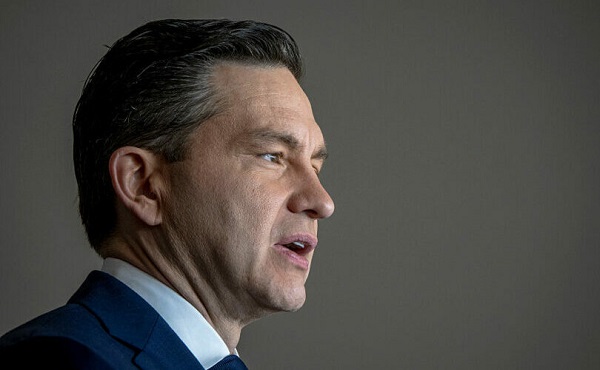Alberta
Update re: Sladjana Petrovic – New appeal to public from Yellowknife RCMP

From Northwest Territories RCMP.
Yellowknife RCMP update on missing woman, renew appeal
Yellowknife, NT, January 6, 2020
Yellowknife RCMP continue to seek the public’s assistance in locating a missing woman, Sladjana Petrovic, age 60.
Sladjana was reportedly last seen on December 26 in the downtown area. RCMP began a missing person investigation on December 27, when she was reported missing.
RCMP have issued pleas for assistance from the public since December 30, 2019. Today, they renew their request, and provide updated information.
Sladjana Petrovic, is described as Caucasian, 5’7” / 170 cm, 257 lbs / 117 kg, heavy build, shoulder length “salt and pepper” brown hair and blue eyes.
The investigation has produced the latest image, taken the day before her disappearance.

Sladjana is seen wearing a dark blue jacket, with light blue liner, a pink or red shirt, black or dark pants, and running shoes. She appears to be carrying a grey/black bag or purse. It is believed Sladjana was wearing the same clothes when she was last seen.
The investigation confirms that Sladjana was last seen at approximately 3:40 pm on December 26, leaving her apartment building on 53 St and walking towards Franklin Avenue. She is believed to be wearing the dark blue jacket, red/pink shirt, dark pants and running shoes.
Investigators continue to canvas the area, as residences and businesses in the downtown area surrounding 53 Street may have video footage from security cameras, “Nest” cams and vehicle dash cams. Residents are asked to review their footage between the hours of 3 PM and midnight, December 26, 2019 and provide police with any sightings.
Yellowknife Ground Search and Rescue (YKGSAR) have been actively patrolling the downtown area, including back alleys and checking yards. Please be aware these patrols may continue.
Additional to the YKGSAR patrols and RCMP canvasses, downtown residents are asked to report anything that may appear unusual in their backyards and outbuildings
Sladjana has been known to visit Calgary and Edmonton in the past. RCMP Yellowknife Detachment is working with partner agencies in Alberta. The media release was shared with Alberta, should Sladjana be making her way from Yellowknife to Alberta.
The investigators of Yellowknife RCMP General Investigative Section continue to work on this priority investigation. They have been supported by the NT RCMP Police Dog Services, Yellowknife RCMP and resources from other units as required. At this time, despite the dedicated, multi-level police investigation, there have been no confirmed sightings, interactions or activity from Sladjana Petrovic since she was last seen on December 26, 2019 at 3:40 pm.
“Our investigators continue to work around the clock to locate Ms. Petrovic. We are concerned for her well-being, and any pieces of information can assist, so please contact us with any information you may have. Our investigatorsare are following every possible lead to locate Ms. Petrovic” states Inspector Alex Laporte, Yellowknife RCMP Detachment Commander.
Anyone with information on whereabouts of Sladjana Petrovic is asked to contact either Yellowknife RCMP at 867-669-1111 or Crime Stoppers at 1-800-222-TIPS, nwtnutips.com, (click on “submit a web tip”) or text: nwtnutips to 274637.
Alberta
Red Deer Justice Centre Grand Opening: Building access to justice for Albertans

The new Red Deer Justice Centre will help Albertans resolve their legal matters faster.
Albertans deserve to have access to a fair, accessible and transparent justice system. Modernizing Alberta’s courthouse infrastructure will help make sure Alberta’s justice system runs efficiently and meets the needs of the province’s growing population.
Alberta’s government has invested $191 million to build the new Red Deer Justice Centre, increasing the number of courtrooms from eight to 12, allowing more cases to be heard at one time.
“Modern, accessible courthouses and streamlined services not only strengthen our justice
system – they build safer, stronger communities across the province. Investing in the new Red Deer Justice Centre is vital to helping our justice system operate more efficiently, and will give people in Red Deer and across central Alberta better access to justice.”

Government of Alberta and Judiciary representatives with special guests at the Red Deer Justice Centre plaque unveiling event April 22, 2025.
On March 3, all court services in Red Deer began operating out of the new justice centre. The new justice centre has 12 courtrooms fully built and equipped with video-conference equipment to allow witnesses to attend remotely if they cannot travel, and vulnerable witnesses to testify from outside the courtroom.
The new justice centre also has spaces for people taking alternative approaches to the traditional courtroom trial process, with the three new suites for judicial dispute resolution services, a specific suite for other dispute resolution services, such as family mediation and civil mediation, and a new Indigenous courtroom with dedicated venting for smudging purposes.
“We are very excited about this new courthouse for central Alberta. Investing in the places where people seek justice shows respect for the rights of all Albertans. The Red Deer Justice Centre fills a significant infrastructure need for this rapidly growing part of the province. It is also an important symbol of the rule of law, meaning that none of us are above the law, and there is an independent judiciary to decide disputes. This is essential for a healthy functioning democracy.”
“Public safety and access to justice go hand in hand. With this investment in the new Red Deer Justice Centre, Alberta’s government is ensuring that communities are safer, legal matters are resolved more efficiently and all Albertans get the support they need.”
“This state-of-the-art facility will serve the people of Red Deer and surrounding communities for generations. Our team at Infrastructure is incredibly proud of the work done to plan, design and build this project. I want to thank everyone, at all levels, who helped make this project a reality.”
Budget 2025 is meeting the challenge faced by Alberta with continued investments in education and health, lower taxes for families and a focus on the economy.

Quick facts
- The new Red Deer Justice Centre is 312,000 sq ft (29,000 m2). (The old courthouse is 98,780 sq ft (9,177 m2)).
- The approved project funding for the Red Deer Justice Centre is about $191 million.
Alberta
Made in Alberta! Province makes it easier to support local products with Buy Local program

Show your Alberta side. Buy Local. |
When the going gets tough, Albertans stick together. That’s why Alberta’s government is launching a new campaign to benefit hard-working Albertans.
Global uncertainty is threatening the livelihoods of hard-working Alberta farmers, ranchers, processors and their families. The ‘Buy Local’ campaign, recently launched by Alberta’s government, encourages consumers to eat, drink and buy local to show our unified support for the province’s agriculture and food industry.
The government’s ‘Buy Local’ campaign encourages consumers to buy products from Alberta’s hard-working farmers, ranchers and food processors that produce safe, nutritious food for Albertans, Canadians and the world.
“It’s time to let these hard-working Albertans know we have their back. Now, more than ever, we need to shop local and buy made-in-Alberta products. The next time you are grocery shopping or go out for dinner or a drink with your friends or family, support local to demonstrate your Alberta pride. We are pleased tariffs don’t impact the ag industry right now and will keep advocating for our ag industry.”
Alberta’s government supports consumer choice. We are providing tools to help folks easily identify Alberta- and Canadian-made foods and products. Choosing local products keeps Albertans’ hard-earned dollars in our province. Whether it is farm-fresh vegetables, potatoes, honey, craft beer, frozen food or our world-renowned beef, Alberta has an abundance of fresh foods produced right on our doorstep.
Quick facts
- This summer, Albertans can support local at more than 150 farmers’ markets across the province and meet the folks who make, bake and grow our food.
- In March 2023, the Alberta government launched the ‘Made in Alberta’ voluntary food and beverage labelling program to support local agriculture and food sectors.
- Through direct connections with processors, the program has created the momentum to continue expanding consumer awareness about the ‘Made in Alberta’ label to help shoppers quickly identify foods and beverages produced in our province.
- Made in Alberta product catalogue website
Related information
-

 2025 Federal Election2 days ago
2025 Federal Election2 days agoPolls say Canadians will give Trump what he wants, a Carney victory.
-

 2025 Federal Election2 days ago
2025 Federal Election2 days agoPoilievre’s Conservatives promise to repeal policy allowing male criminals in female jails
-

 2025 Federal Election2 days ago
2025 Federal Election2 days agoCarney Liberals pledge to follow ‘gender-based goals analysis’ in all government policy
-

 2025 Federal Election2 days ago
2025 Federal Election2 days agoTrump Has Driven Canadians Crazy. This Is How Crazy.
-

 Entertainment1 day ago
Entertainment1 day agoPedro Pascal launches attack on J.K. Rowling over biological sex views
-

 2025 Federal Election2 days ago
2025 Federal Election2 days agoThe Anhui Convergence: Chinese United Front Network Surfaces in Australian and Canadian Elections
-

 conflict1 day ago
conflict1 day agoTrump tells Zelensky: Accept peace or risk ‘losing the whole country’
-

 2025 Federal Election1 day ago
2025 Federal Election1 day agoPoilievre Campaigning To Build A Canadian Economic Fortress





